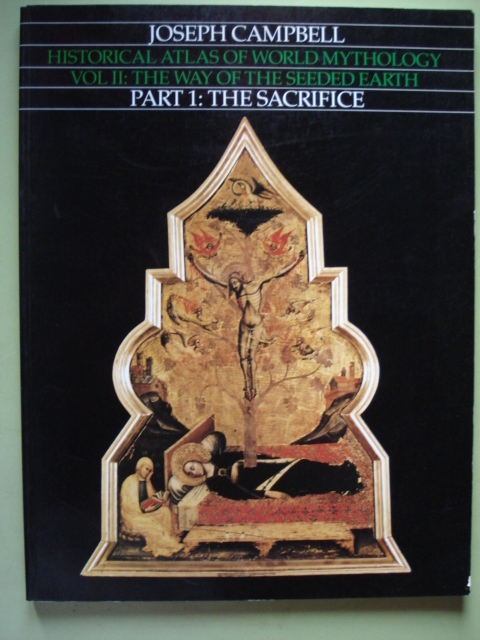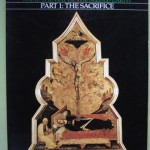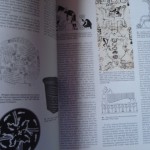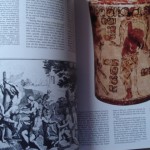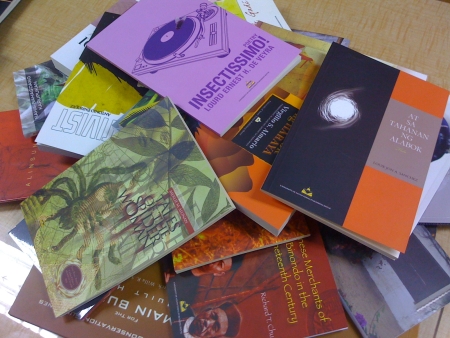A Passion for Writing. Our customer spotlight for this month is on Maryanne Moll. We thank her for answering our questions as well as sharing her love for Moleskines and Fountain Pens.
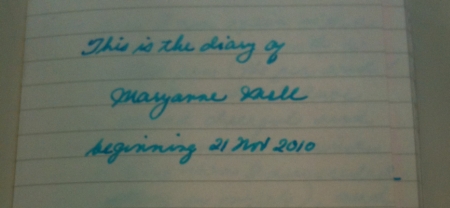
– How did your love of Moleskines begin? What is your favorite type?
I first heard about the Moleskine from the Philippine Macintosh Users Group. I’ve been a member of that forum since around 2003, and there was one thread there dedicated to Moleskines and fountain pens and all other sorts of papers, pens, and pencils. Of course, the thread starter was Butch Dalisay, himself a passionate collector of fountain pens, and a multi-awarded writer who takes down notes on Moleskines with fountain pens. At first it struck me as strange that a some Mac users, who have easy access to the most e?cient and best-looking technology around today, would still revert to analog regularly, and by choice. But then again when I got my own very first Moleskine, I understood why. The Moleskine is the Mac of notebooks. It’s simple and elegant, and it just works!
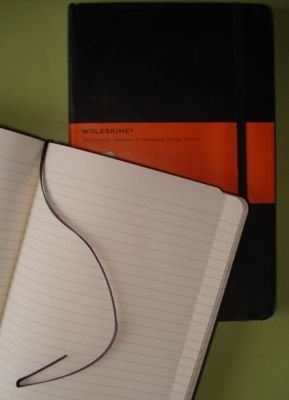
My favorite type has got to be the Moleskine Classic Ruled Notebook. I started with the large-sized ruled — which I used to partner with the large weekly notebook planner — but then I downsized to the pocket, because I want to be able to carry smaller bags. Now I always have the pocket ruled (which I order from Avalon.ph), and the pocket daily planner.
– For many people, writing is a passion. Why should they try out a Moleskine?
Simply because if you are passionate about something, you should get the best tools for it. And if your writing is important to you, you will take care not only about the words and phrases and sentences and what they represent, but also about where these words and phrases and sentences are encased, before they become a book and eventually ?y out of your study with a life of their own. If a book is an offspring, then the published book is the adult, and the draft for that is the infant that you have nurtured with the best possible time, effort, precision, study, love, worry, sleepless nights, a lot of sacrifice, and the best available nursing bottles, toys, food, clothes, blankets.
The analogy might seem extreme to some, and I certainly don’t want to say that a book is the same as a baby, because it isn’t. But anyone who has written a book can understand that it’s not easy to get it out of you, and it’s even harder to refine it to publishable quality according to very exacting standards, so whatever helps will be welcome. I’m sure there are a lot of writers out there who have produced books out of drafts written on legal pads with cheap pencils and ballpoints, and I find that admirable. But if you’re anything like me who actually needs the physicality of things, who needs to grasp something palpable and stable, and who cannot work in a fog of virtuality, then the Moleskine becomes not just a notebook but a clear and solid anchor for when things get dark and murky.
– You are also a fountain pen collector. What do you use on your Moleskine?
My current favorite pen is the Pelikan Grand Place with the medium nib it came in. Right now it’s loaded with Montblanc British Racing Green (a dark mossy green color), and that’s what I use on my Moleskine journal. The combination lays down wet and saturated lines, and when the ink dries on the paper, the variation is really pretty. It makes me look rather intelligent, even if the statement goes something like, “I think my hair looks greasy today, so I will use the citrus shampoo.”?
I also use this pen and ink combination for writing checks, because it makes me feel rich!
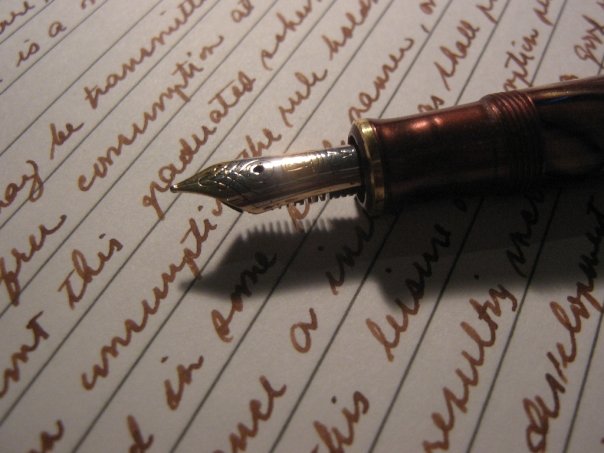
For my daily planner, I use the Pilot Vanishing Point with a medium nib. I have it in chrome. Since it’s my office pen, I use Noodler’s Zhivago with it. That’s a “bullet-proof” ink, for which Noodler’s has a guarantee to never fade nor disappear, even if you throw bleach on it.
Lately, though, I have taken to these fine-tipped dry-safe markers from Staedtler that come in a lot of different vibrant colors, but only because I am always so paranoid that I will either drop or lose a fountain pen. (In fact, I have dropped my Vanishing Point, nib section downwards. Thankfully, the nib was retracted, so it wasn’t damaged at all, but the opening where the nib goes out is now a little deformed.) But for now, the markers work.
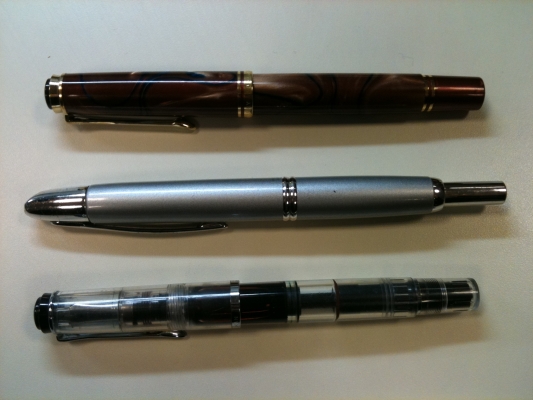
I’m not such a dedicated fountain pen collector, though. I have a total of about six fountain pens, not including one Lamy Safari that I lost a few years ago. But I do make it a point to purchase a fountain pen and a few different bottles of ink every couple of years.
– What pen advice can you give to someone who is new to the synergy of the paper and pen?
I don’t think anyone is really “new” to the synergy of paper and pen. After all, that’s how we all learn how to write! But I can understand how the idea might seem new — and even alien — to people who have used the computer as their tool for so many years. Anyone who is new to using fountain pens would feel initially uncomfortable with the fact that we can’t turn the pen in our fingers while we write. It’s not like a pencil that we have to turn every few lines or so, to ensure that we wear down the graphite end evenly. But a Lamy Safari has a special shape to its section that reminds users to keep their fingers there, and when we get used to writing that way, we can use any other fountain pen with ease. This is why I consider the Lamy to be a good starter fountain pen.
And when you are past this, the search will be on for what I call the “forever” pen, the pen that you will use for the rest of your life. Find a pen that feels right in your hand, a pen that complements your handwriting without pressuring you to improve the penmanship that you already have — although there will certainly be some pens that will make you feel that that is required.
Find a pen that makes you smile each time you uncap it to write something, anything, be it a short verse of a chapter of a novel, or even if only just to write checks to cover the bills. A pen that is “you” is a pen that feels like a friend, because it assures you that no matter what you write, the lines that the pen will lay down will be true to the moment of creativity.
– Would you share a few images of your Moleskine and your fountain pen collection?
Sure!
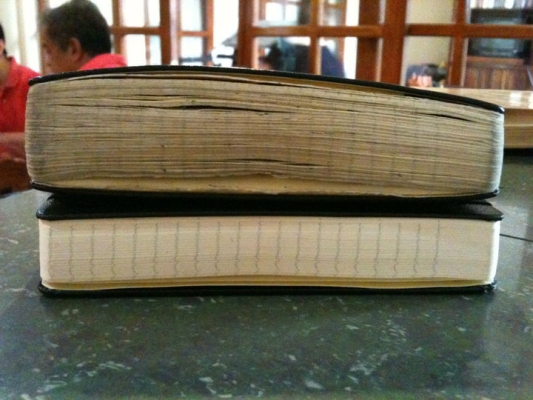
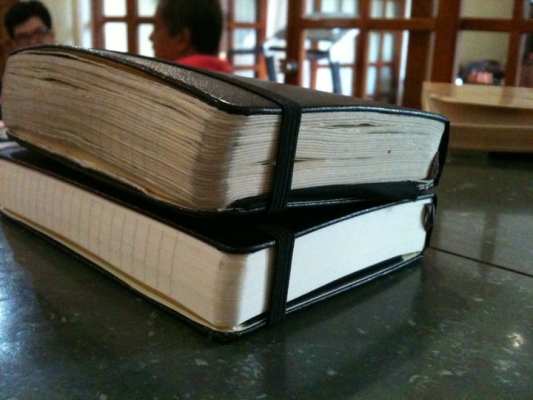
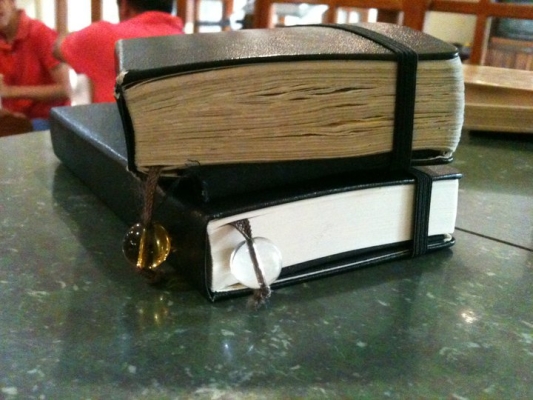
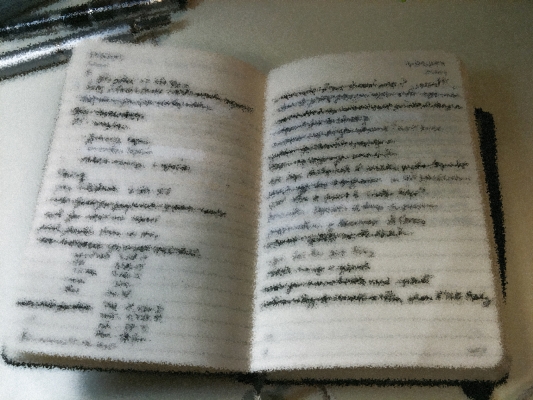
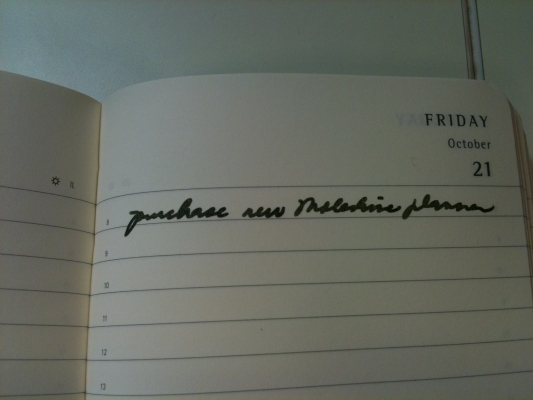
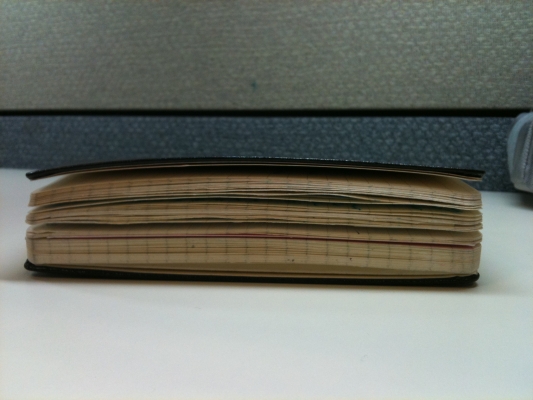
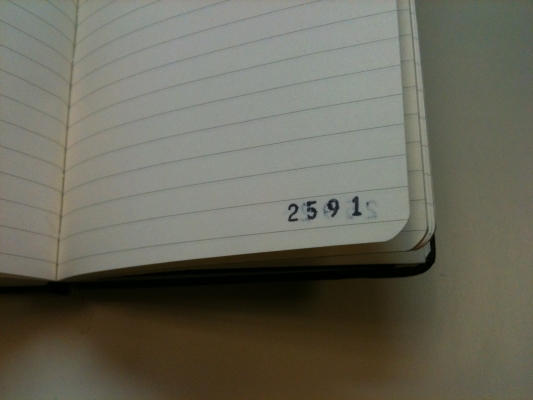
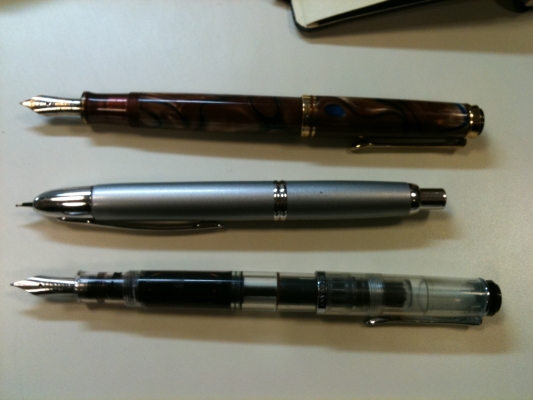
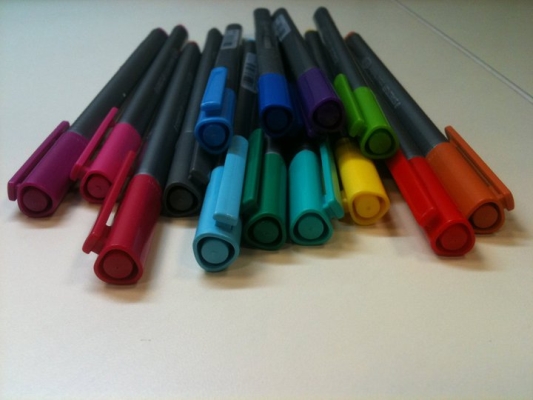
– Lastly, and I am sure a lot of new Moleskine owners have experienced this dilemma. What would be your best advice for people who are afraid to unseal, open and write on their very first Moleskine?
I understand how intimidating it could feel, but the Moleskine is your friend. It can keep your secrets, it can protect your words and your thoughts, it can coax some of the most difficult lines out of you, and it can be your most honest companion an a journey to your innermost, deepest, most hidden self.
Of course if you don’t unseal it and open it and write on it, that’s fine, too, if you want to stay within your comfort zone. Just having a sealed Moleskine there can be a source of comfort in itself. But just compare that to the world that you can open up for yourself if you do decide to write on a pristine new Moleskine. The world is too big and life is too short, and there are many more Moleskines where that sealed one came from. And you are too vibrant a human being to not write on a Moleskine. So go ahead, tear off the shrink-wrap, uncap your pen, and write to your heart’s content.
About Maryanne Moll.
Maryanne Moll is a writer, mother, graduate student, and government employee. She has written two books of essays, and has been writing fiction since 2003. Her fiction has been published in magazine and anthologized, and she has won a Palanca for her fiction in 2005. She lives in Makati.
Twitter: http://www.twitter.com/maryannemoll
Blog: Sensibilities – http://maryannemoll.blogspot.com
